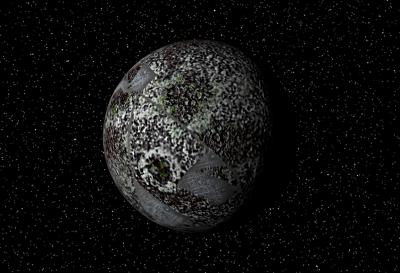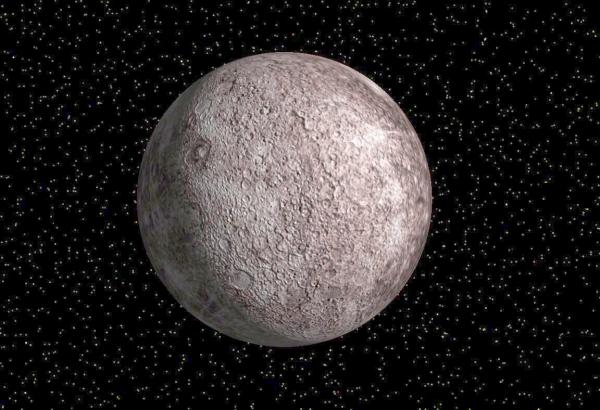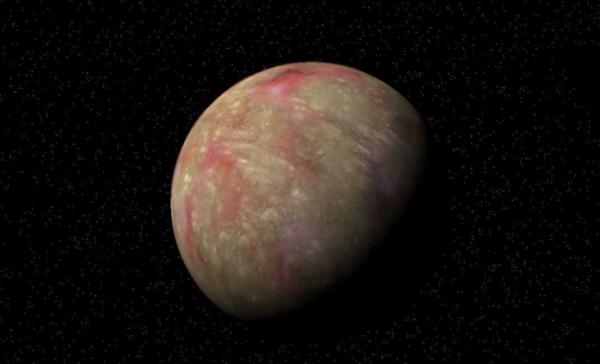BY LETTER
Hermian type worlds
Dense, inner system worlds | |
 Image from Steve Bowers | |
| Hermes, a Hermian world in the Beta Canum Venaticorum system | |
Sometimes also called formerly Mercurian type. These worlds have a relatively large core and a high metal content, but there remains a lighter, rocky crust as well. These worlds may be formed in a similar manner to Ferrinian planets, but at a further orbit from their sun, or they may be formed after suffering a cataclysmic impact during the formative period, in which most of the lighter rocky material is blasted out into space. These planets are heavily cratered, with some signs of primordial geologic activity. Their atmospheres are non-existent, save for a trace layer of helium being constantly replenished and stripped by the stellar wind.
 Image from Steve Bowers | |
| Mercury, in the Sol system | |
 Image from Steve Bowers | |
| Daphnis, in the Beta Coma Berenices system | |
Examples include Mercury, Hermes, Daphnis (in the Beta Coma Berenices system), Thales and Aristotle in the Delta Pavonis system, Suddle in the Jafalgia system, Zarauztar and many more.
Hermian type worlds with mass greater than 2.5 x Earth are rare, but not unknown. These are worlds that should have thick, dense atmospheres, but instead are dense, high-gravity rockballs. Unlike Chthonian type worlds, these worlds have lost their atmospheres during the formation stage, usually due to repeated impacts. These large Hermian type worlds are classed as SuperHermians or SuperMercuries.
Related Articles
Appears in Topics
Development Notes
Text by John M. Dollan
Initially published on 18 November 2008.
Initially published on 18 November 2008.






